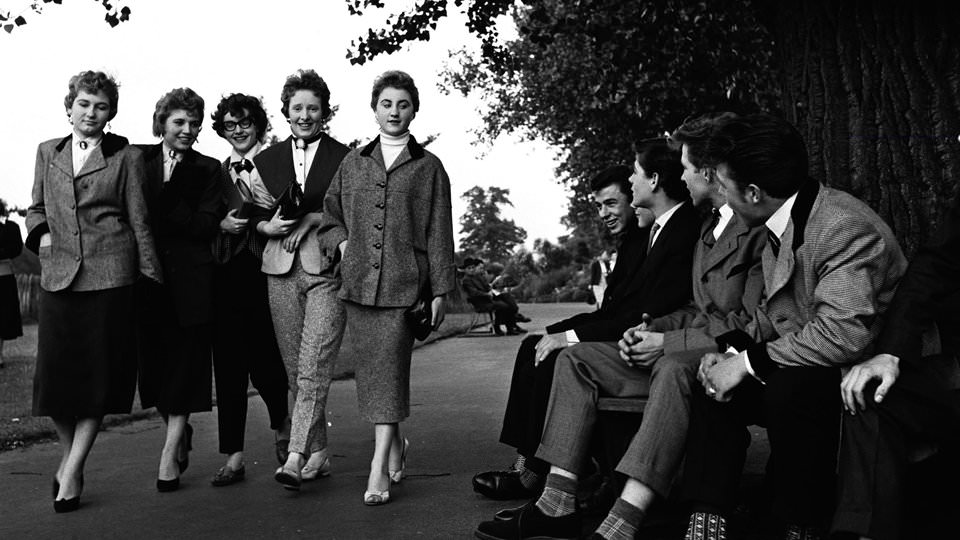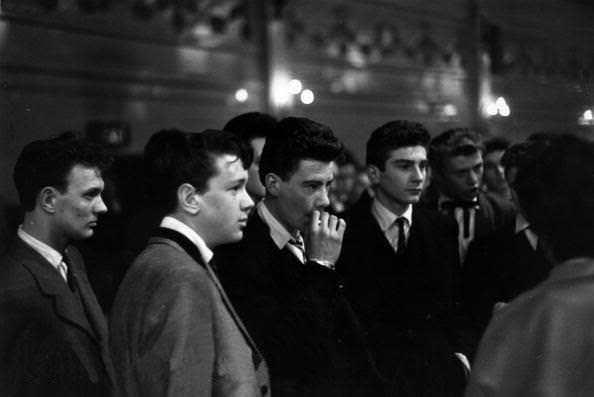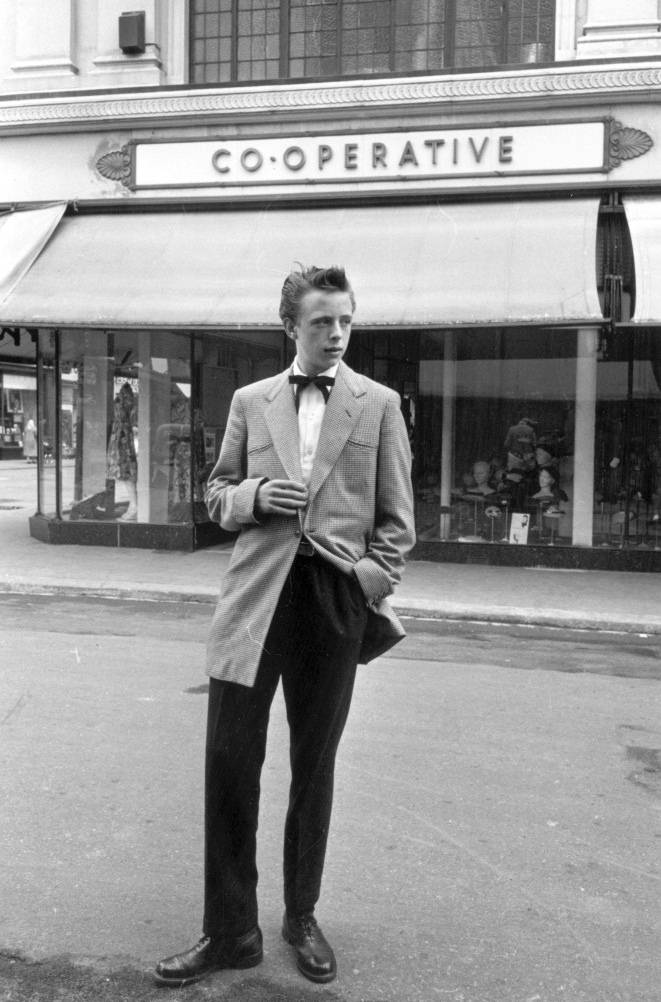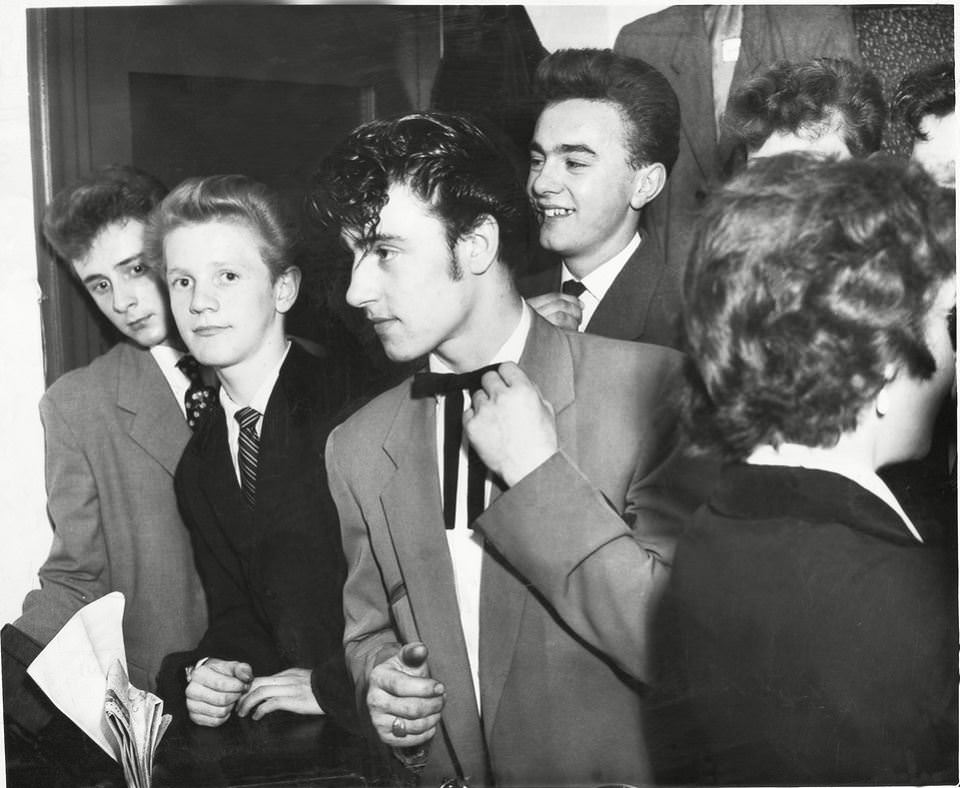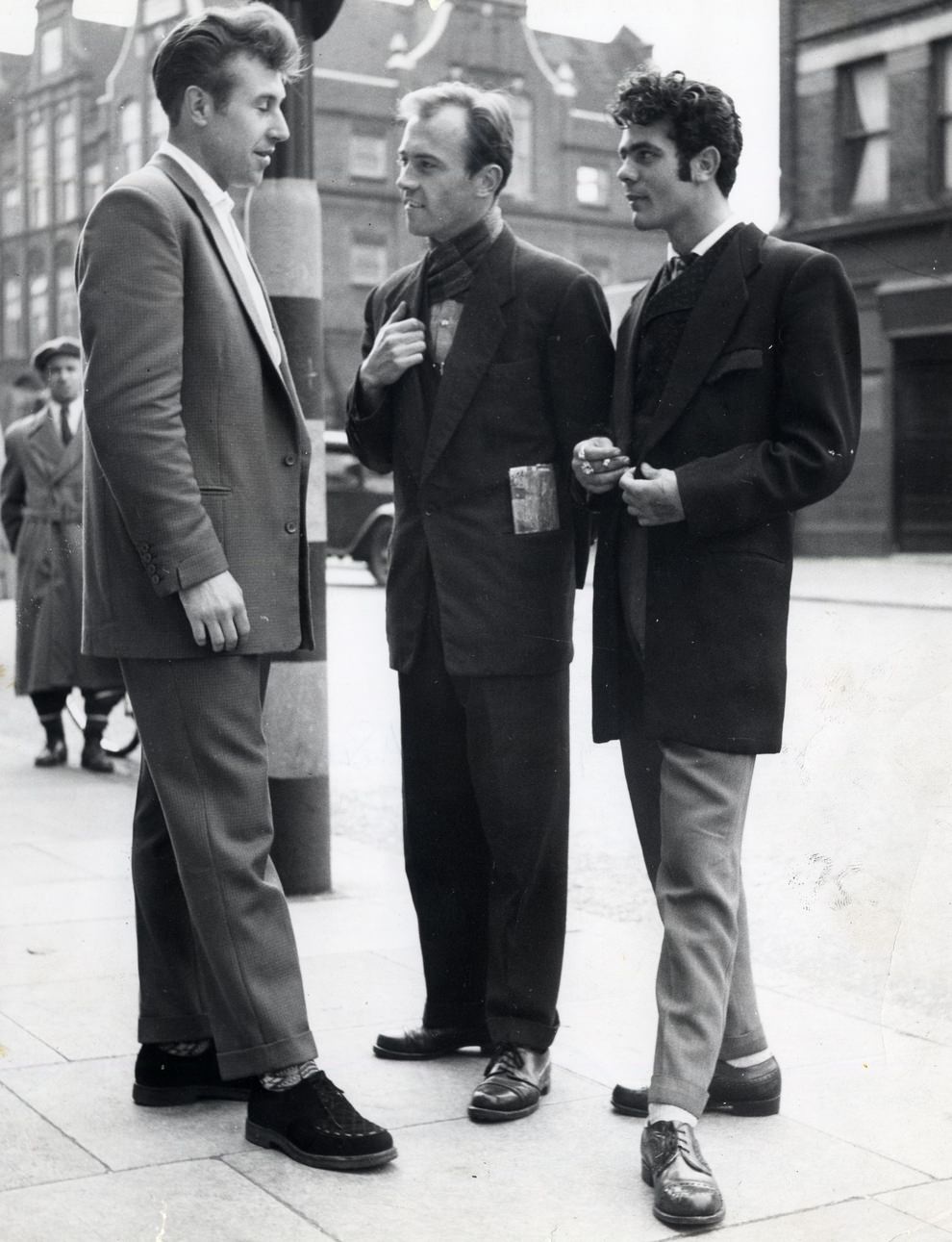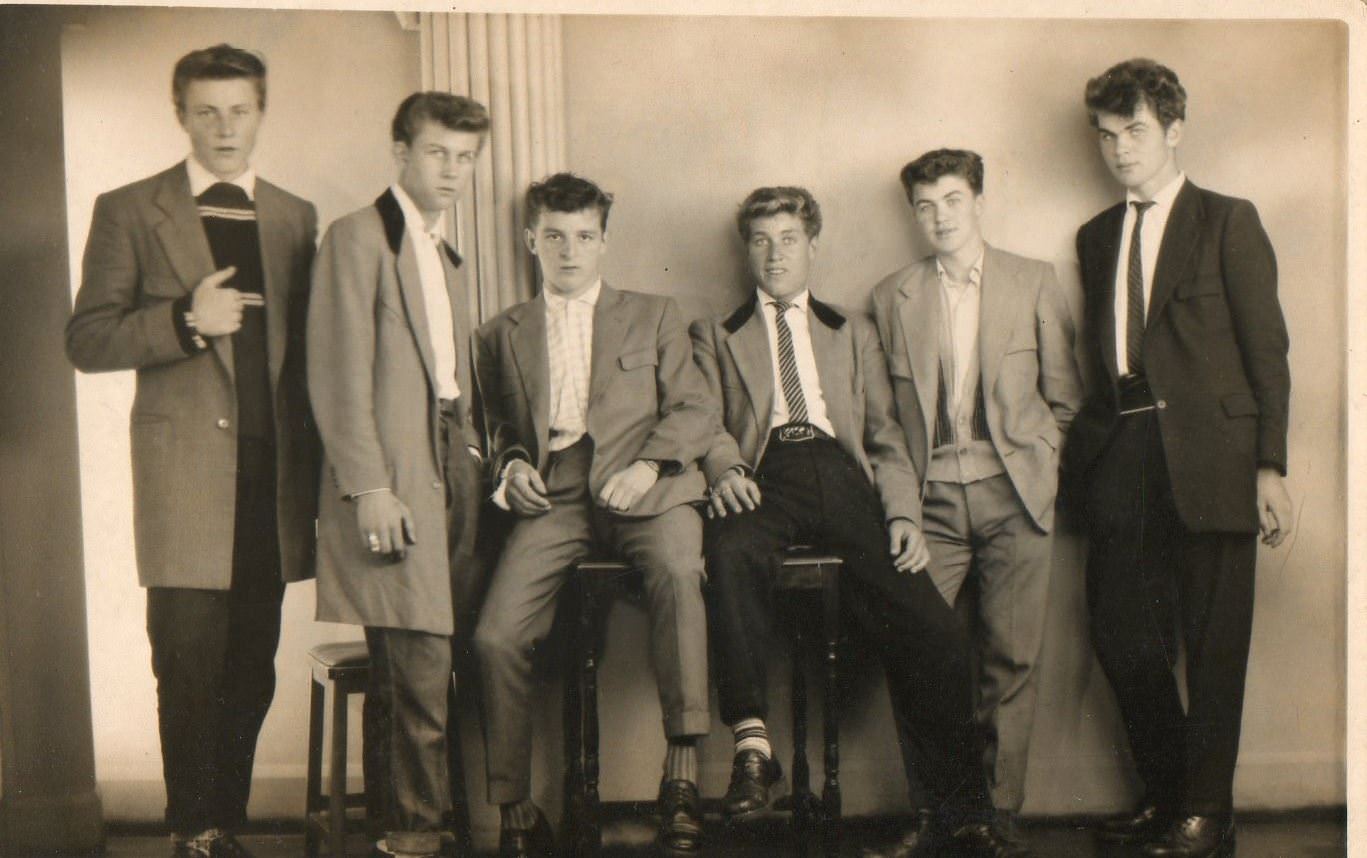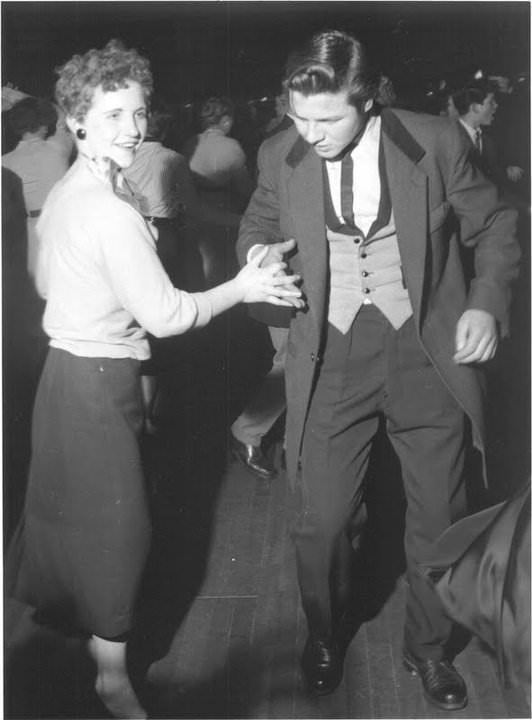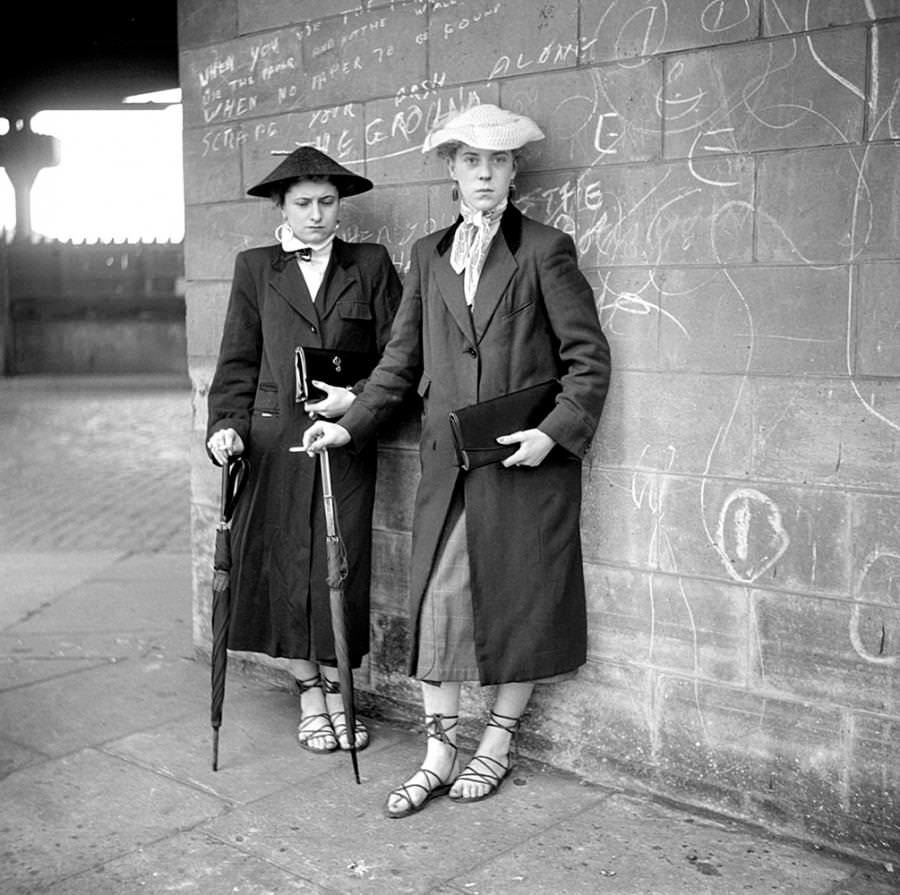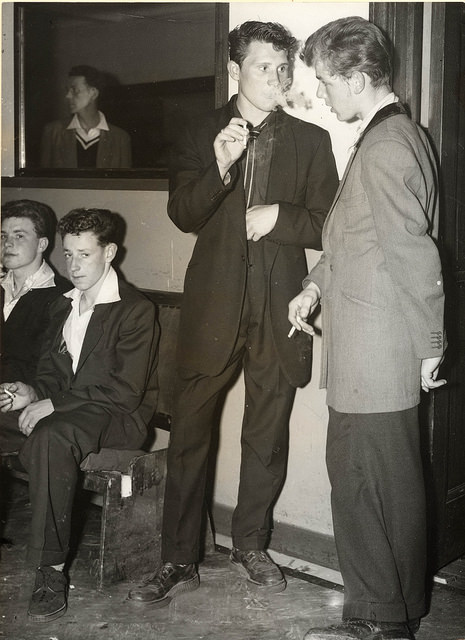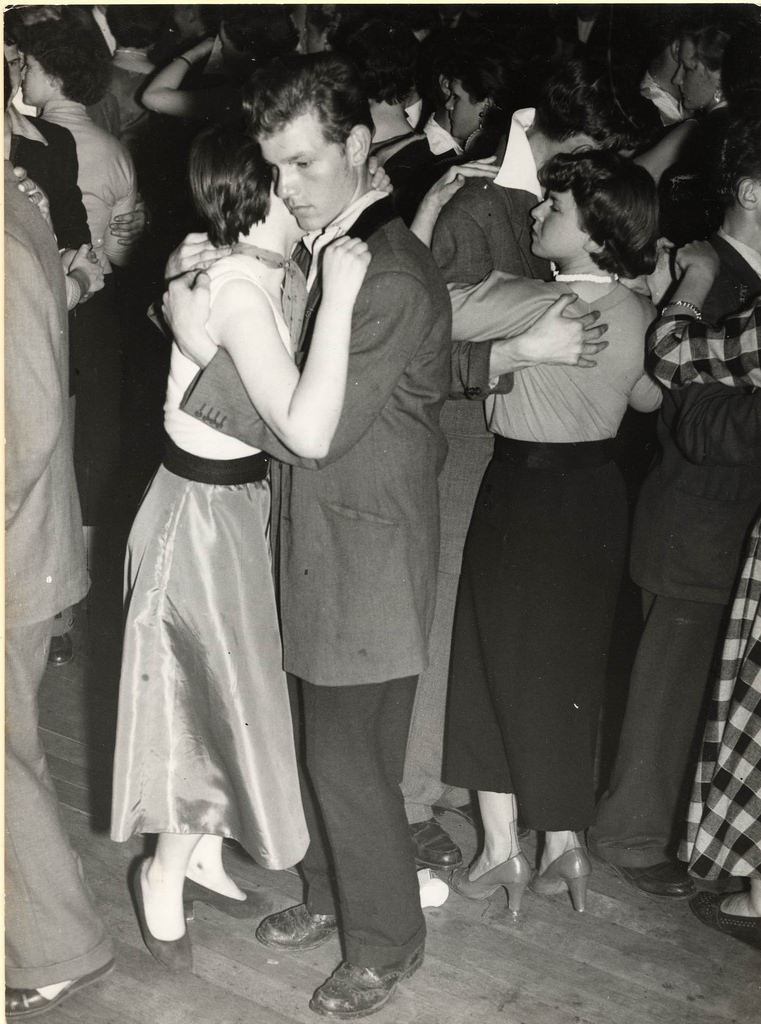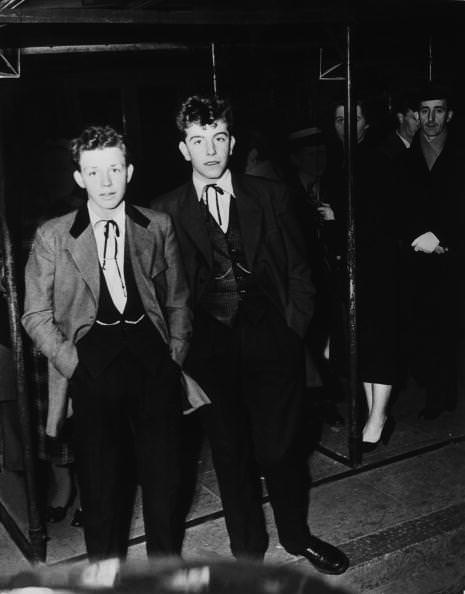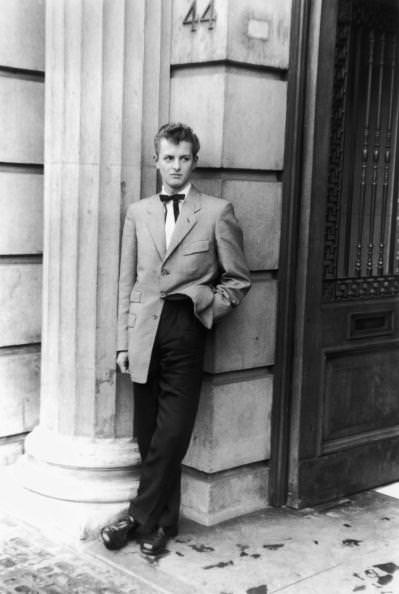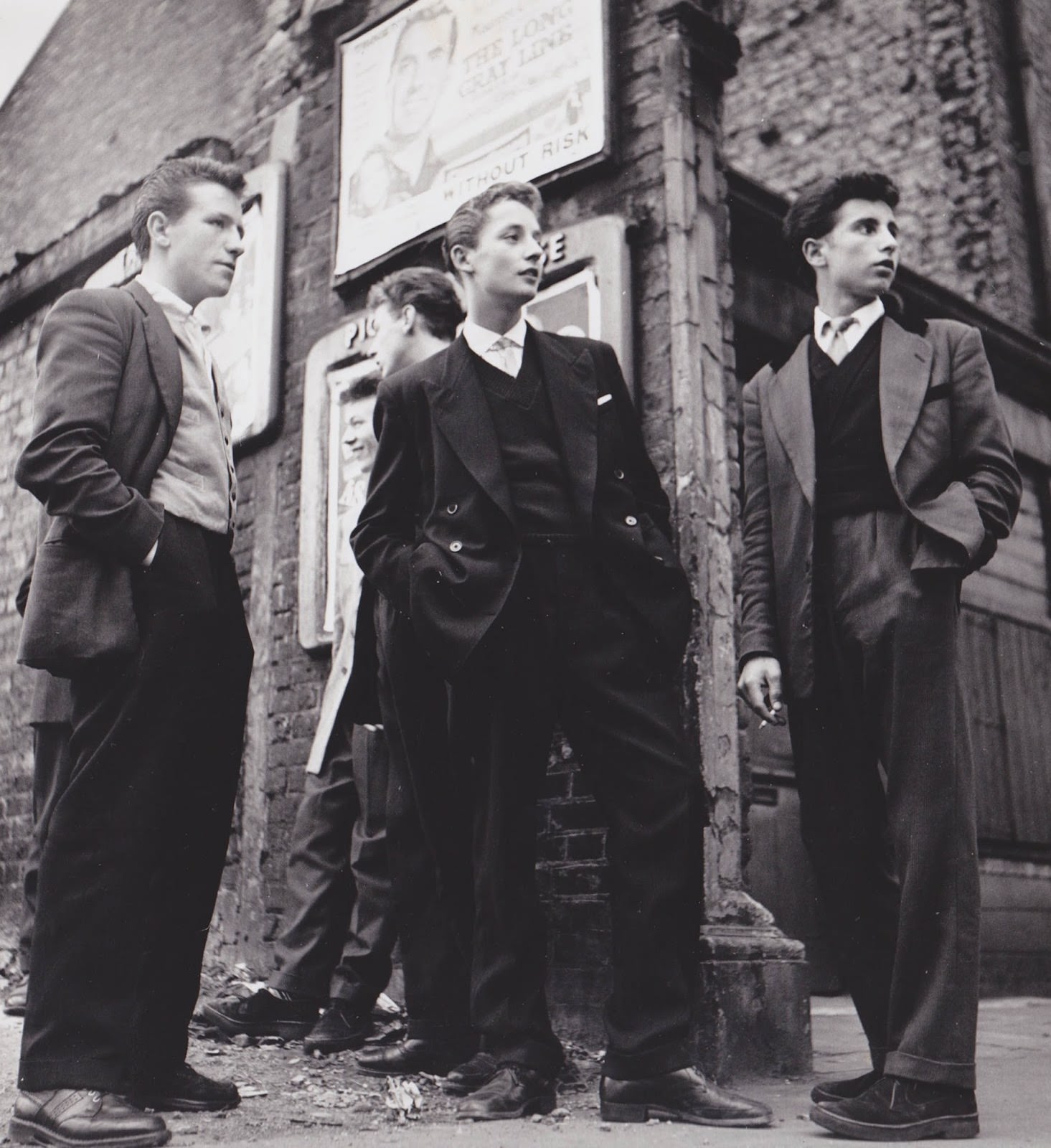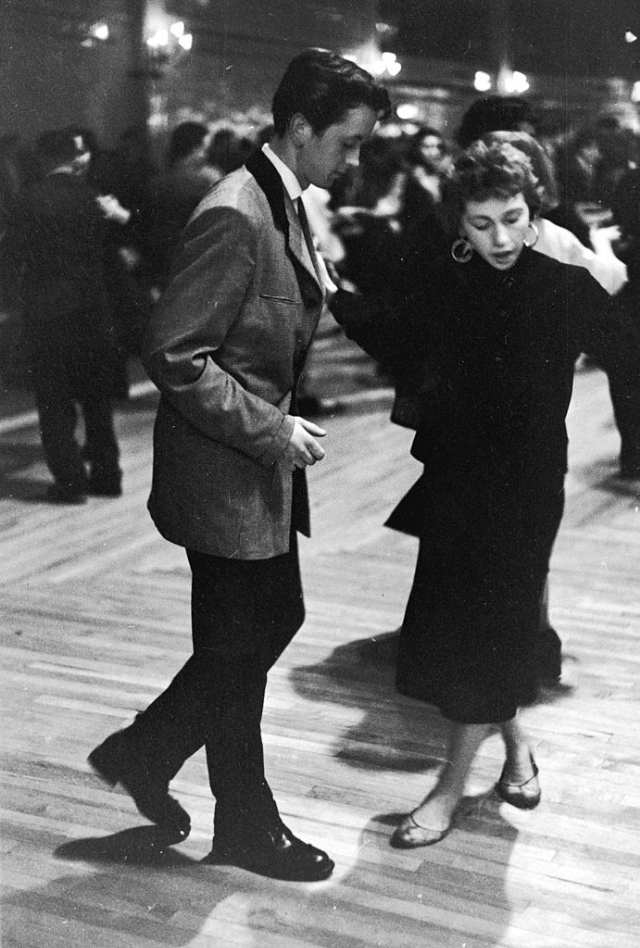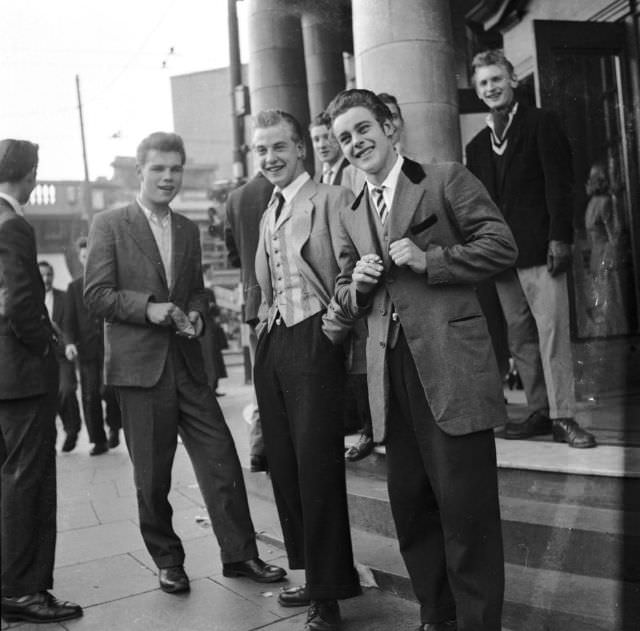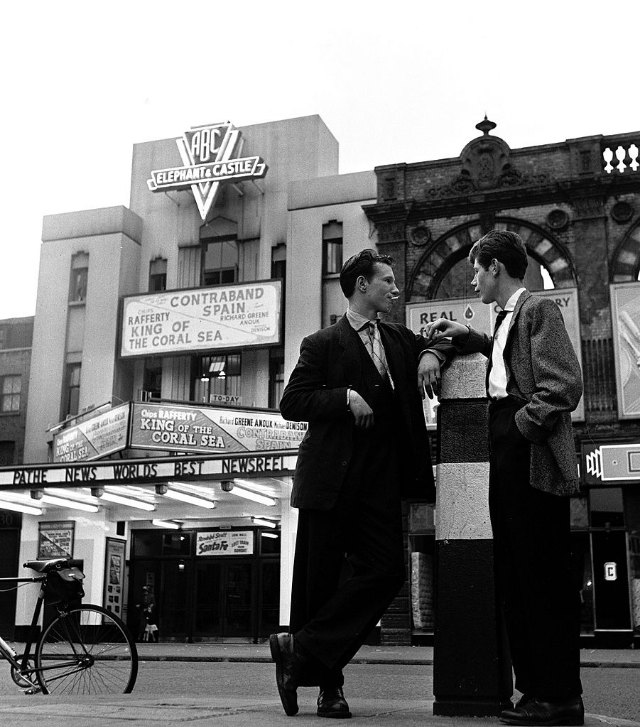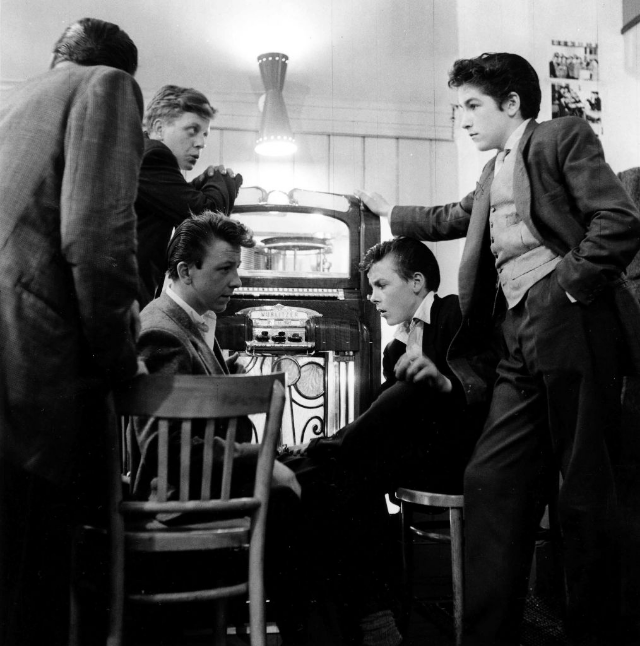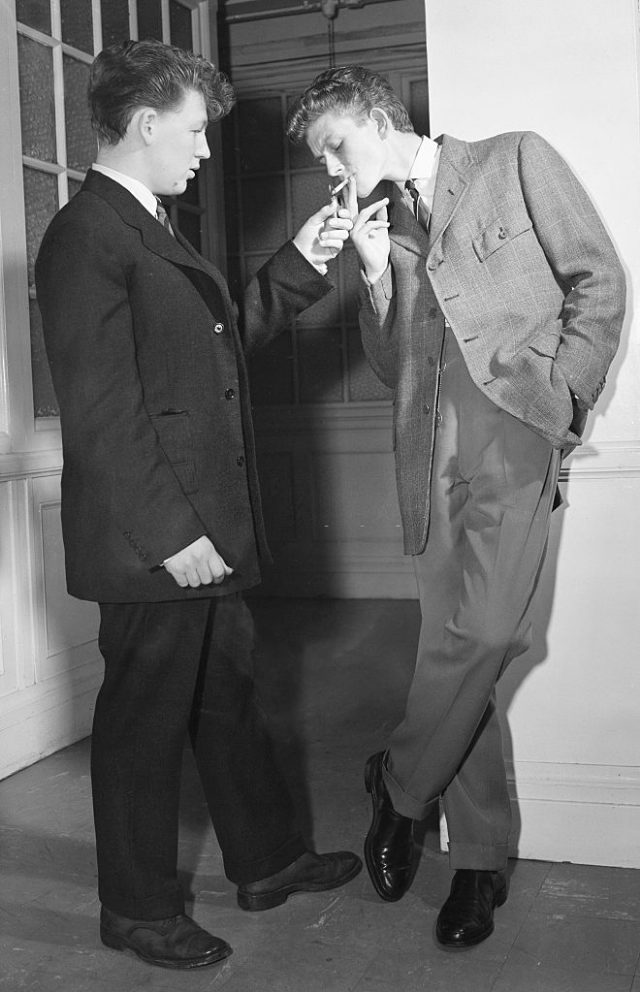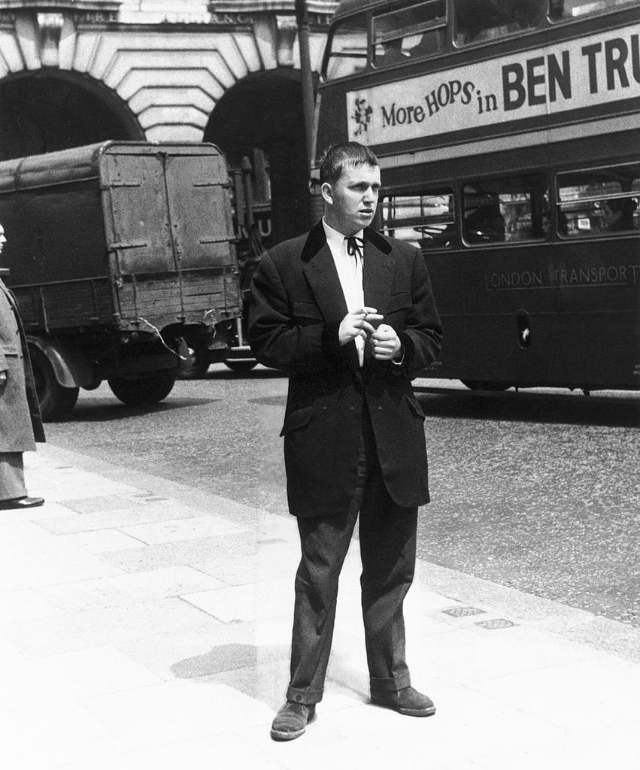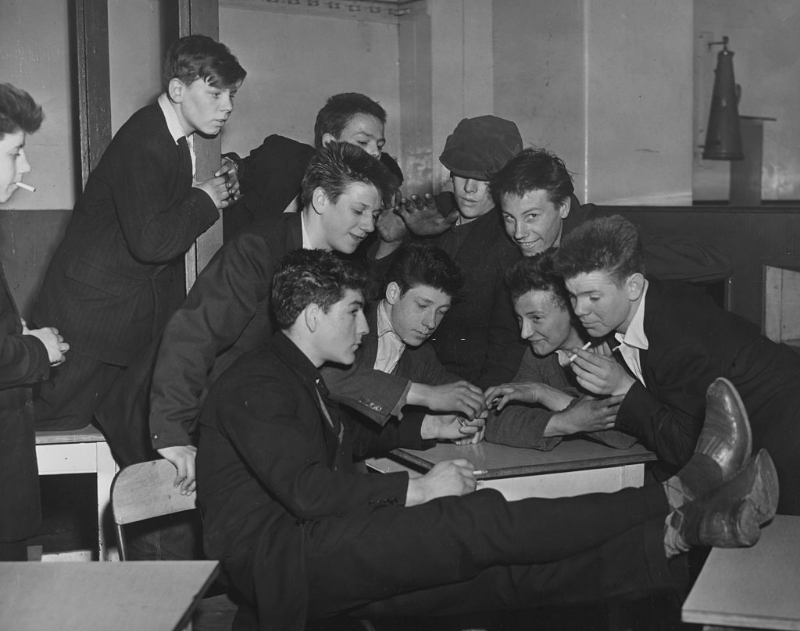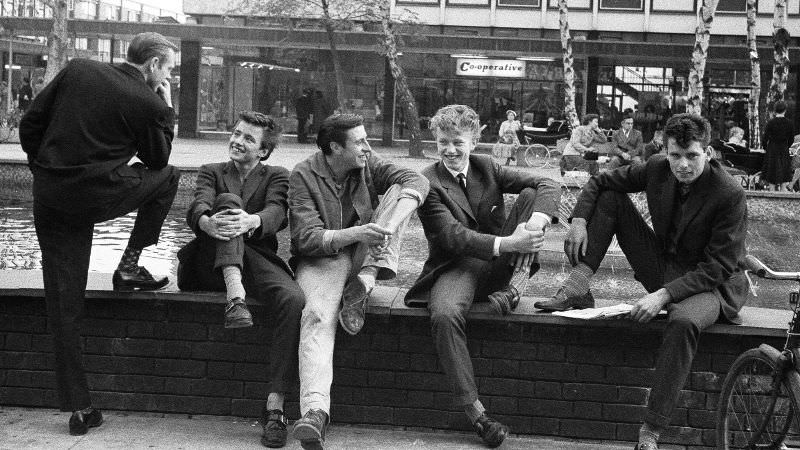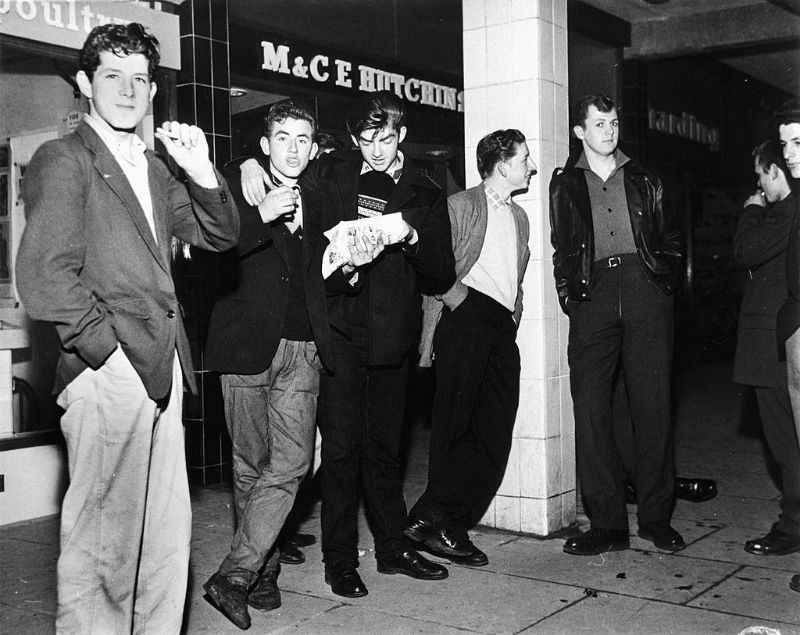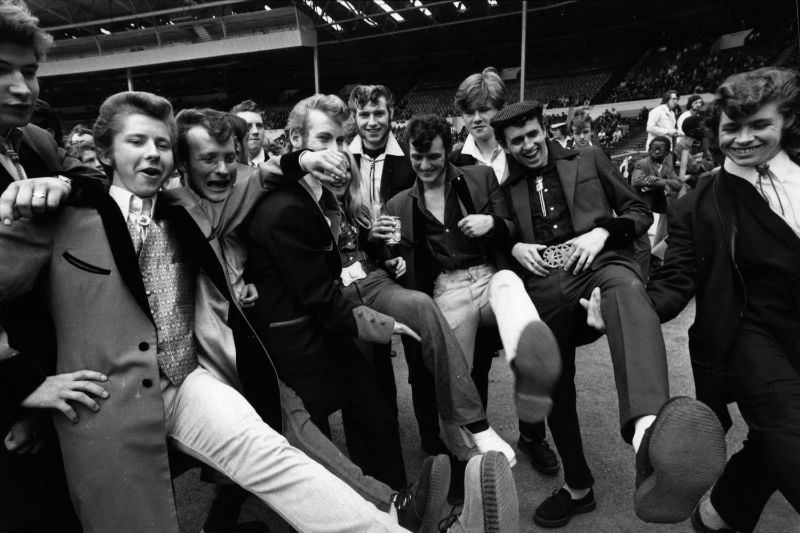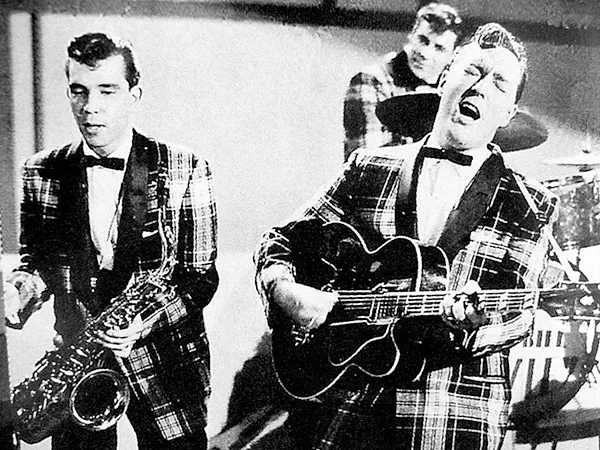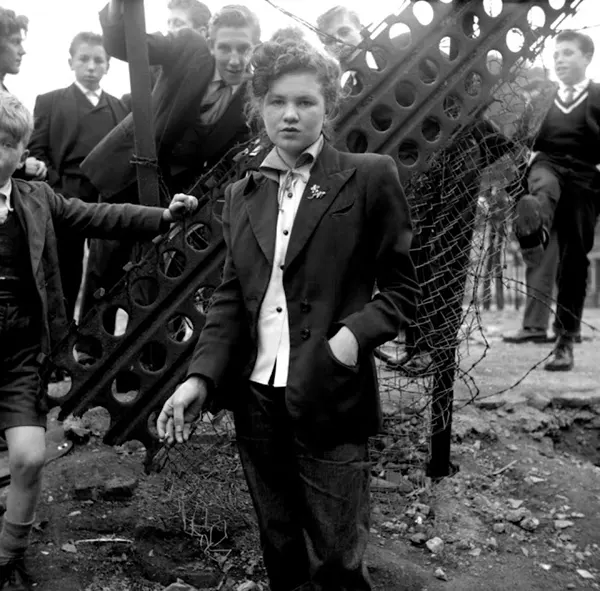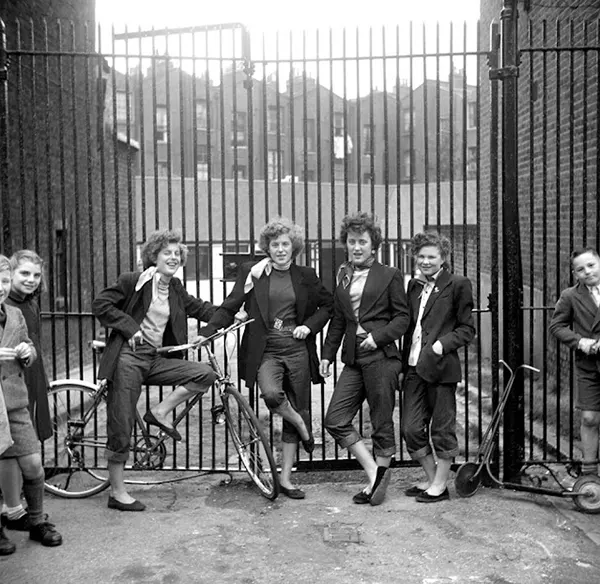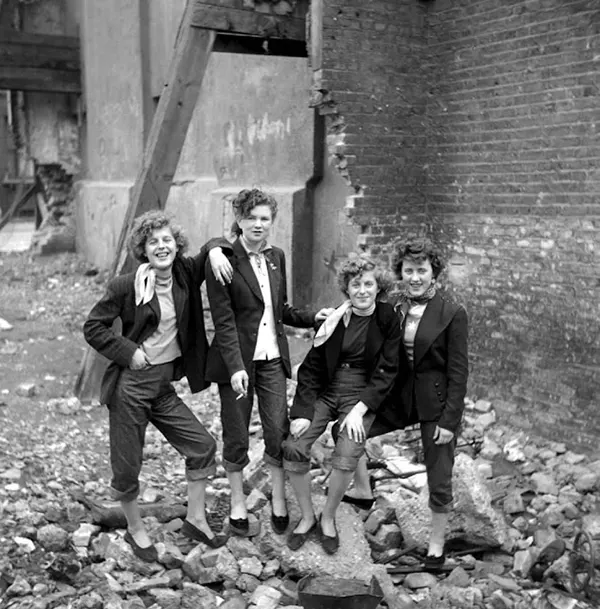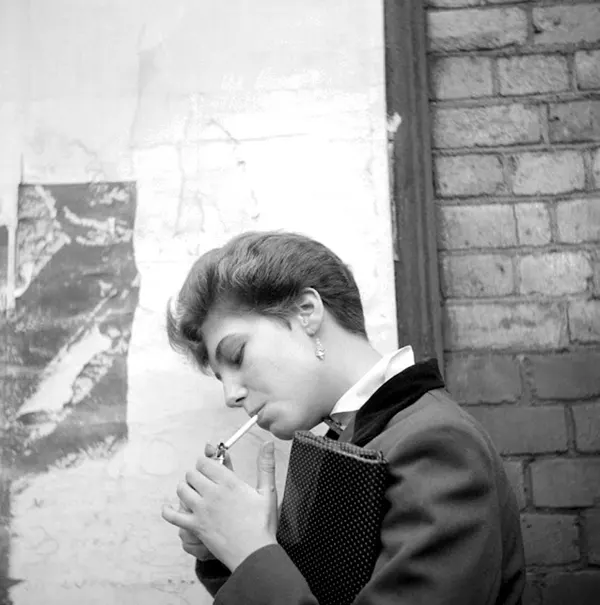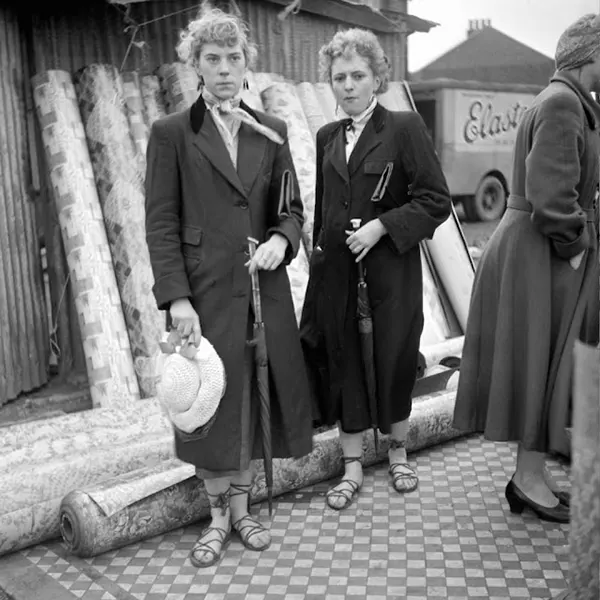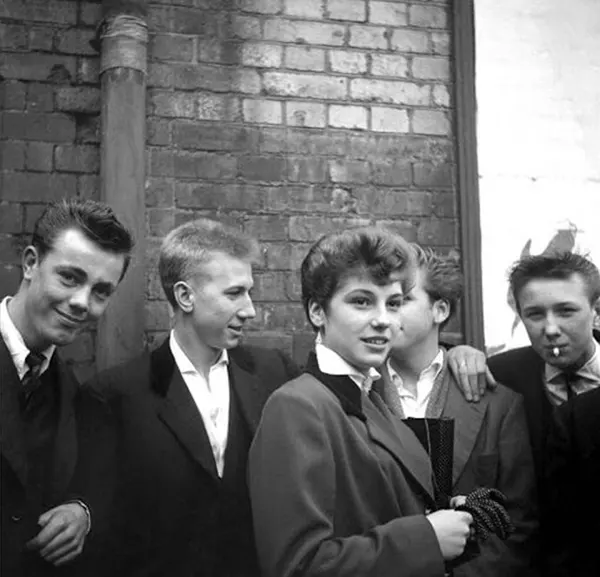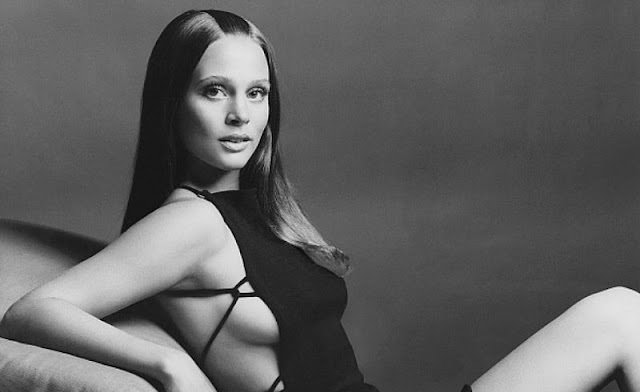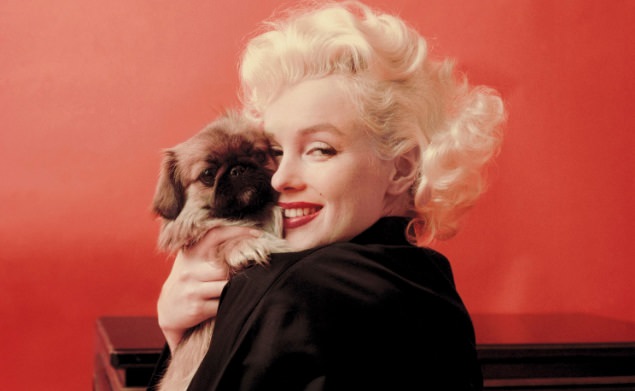In the 1950s, amidst the rubble of post-war Britain, a vibrant subculture emerged that would leave a lasting mark on the fashion and cultural landscape: the Teddy Boys. This group of young men, and eventually women, turned back the clock to embrace an Edwardian style that had been out of fashion for nearly half a century.
The Teddy Boys resurrected the Edwardian dandy’s flair for sartorial elegance, infusing it with a rebellious edge that was unmistakably modern. Their look was distinctive and meticulously curated, featuring long, velvet-collared drape jackets, often in dark shades, which harked back to the coats worn by Edwardian gentlemen. These were paired with high-waist, narrow trousers—known as “drainpipes”—which showcased the silhouette of the suit and the wearer’s daring to deviate from the norm.
Accessories played a crucial role in the Teddy Boy ensemble, with slim neckties, flashy waistcoats, and brocade vests adding layers of sophistication and flair. Leather shoes, often suede brothel creepers with thick crepe soles, completed the look, lending an air of nonchalance to the otherwise formal attire.
The Teddy Boys’ hairstyles were as much a statement as their clothes, with greased quiffs, sideburns, and DA (duck’s ass) cuts becoming symbols of the subculture’s flamboyant defiance.
While the Teddy Boys often stole the spotlight, the Teddy Girls—or “Judies”—played a crucial role in shaping the subculture. These young women adapted the Teddy aesthetic to create their own version of the look, incorporating tailored jackets, rolled-up jeans, and flat shoes. Like their male counterparts, Teddy Girls sported elaborate hairstyles and made bold fashion statements that challenged the era’s expectations of femininity and decorum.
The Teddy Boys and Girls were not just about fashion; they embodied a spirit of rebellion and individuality. In the face of postwar austerity, they chose to invest in their appearance, spending significant portions of their wages on tailor-made suits and elaborate hairstyles.
However, the subculture’s flamboyance and exclusivity also drew criticism and concern. The association of some Teddy Boys with gang violence and delinquency, culminating in the tragic incident of 1953, cast a shadow over the movement. Clubs and venues began to ban Edwardian-style clothing in response, and the mainstream media often portrayed Teddy Boys in a negative light.
As the 1950s gave way to the swinging ’60s, the Teddy Boy subculture began to fade, replaced by new movements and styles that captured the zeitgeist of a changing Britain.


